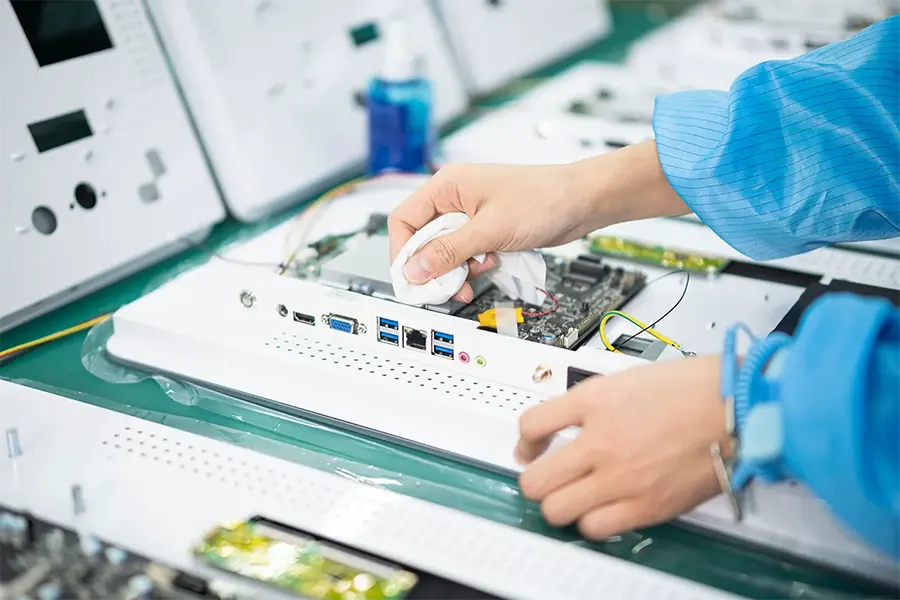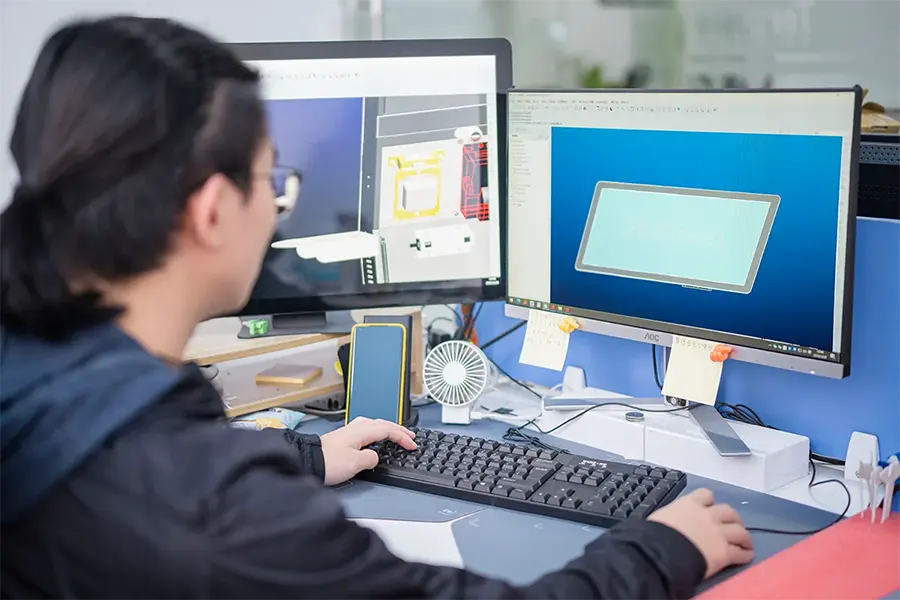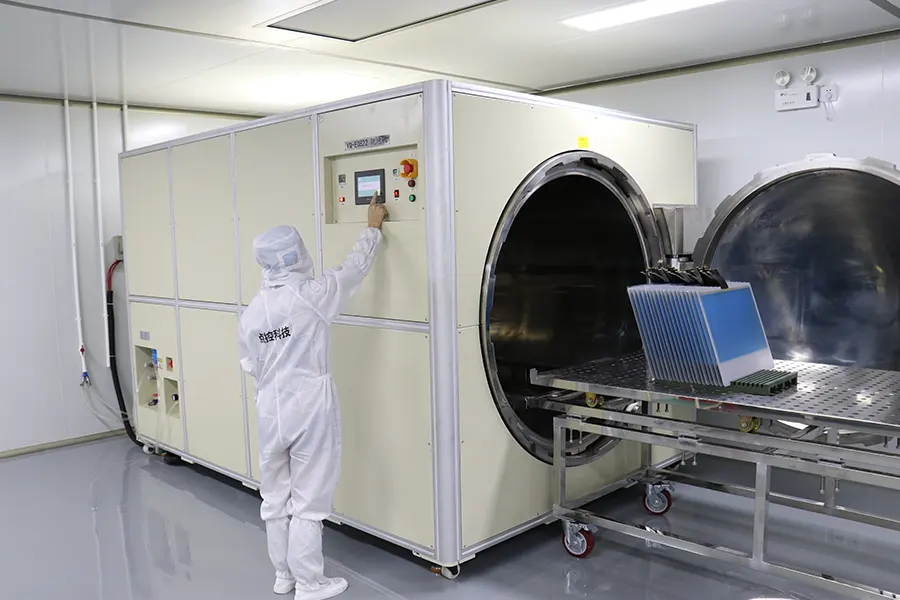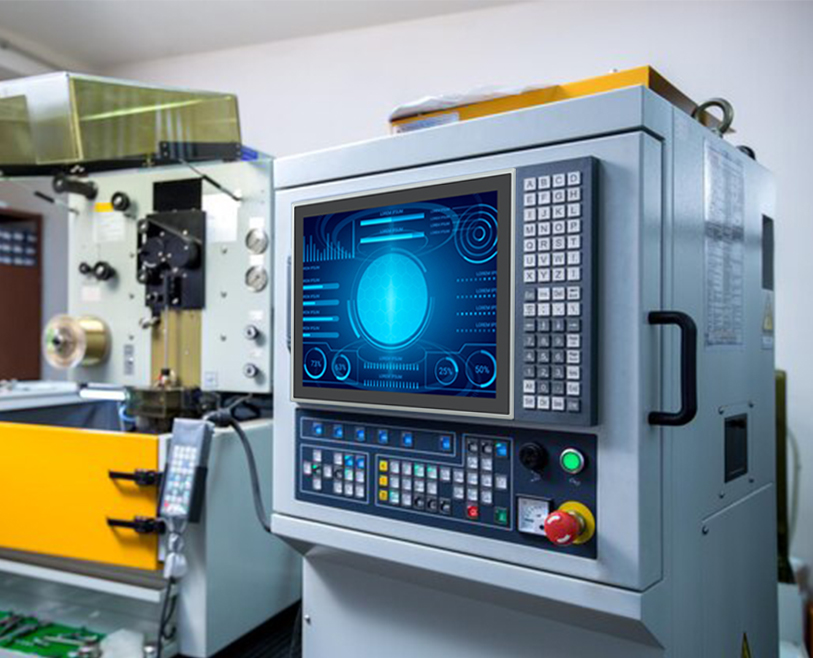In today’s fast-paced, tech-driven world, screens are everywhere – from checkout kiosks at the grocery store to interactive maps in shopping centers. These screens aren’t one-size-fits-all; they’re thoughtfully crafted for specific functions. That’s where a custom touch screen display truly shines, designed to meet precise requirements and provide a seamless experience tailored to any environment. This blog delves into the fascinating world of custom touch screen technology, exploring how customized displays can enhance business operations, improve user interactions, and make a lasting impact.

Custom Touch Screen Display Technology
Custom touch screen display technology encompasses various methods tailored to specific applications, enhancing user interaction and functionality. The following sections delve into distinct technologies, each offering unique advantages and capabilities.
Resistive Touch
Resistive touch technology comprises two flexible, transparent layers separated by a gap. When pressure is applied, these layers connect, creating an electrical circuit that pinpoints the touch location. This simple mechanism detects touch through physical pressure rather than electrical properties, enabling interaction by any object that presses down on the screen. Resistive technology offers accurate, single-point touch recognition and is commonly used for basic touch applications where only a single input is needed.
Features
- Cost-effective
- Accurate single-touch
- Works with gloves
- Durable in harsh environments
Applications
Industrial machinery, ATMs, and medical equipment requiring precision and durability.
Projected Capacitive Touch (P-Cap)
Projected Capacitive Touch (P-Cap) technology uses a transparent, conductive grid placed on the screen’s surface to create an electrostatic field. When a finger or conductive object interacts with this field, it distorts, allowing the system to detect the touch location. This non-pressure-based mechanism enables accurate, multi-touch functionality by detecting changes in capacitance, offering a responsive and smooth user experience. P-Cap is highly sensitive and works well with gestures, supporting both single- and multi-touch inputs.
Features
- Multi-touch support
- High touch sensitivity
- Smooth gesture control
- Robust against contaminants
Applications
Smartphones, kiosks, and automotive dashboards for fluid, intuitive navigation.
Diagonal Touchscreen Arrays
Diagonal Touchscreen Arrays utilize a grid of conductive lines arranged diagonally across the screen surface. These lines detect touch locations by measuring changes in electrical capacitance where intersections occur, pinpointing contact accurately. By configuring electrodes diagonally, this technology provides improved touch sensitivity and accurate multi-touch tracking, especially for large-format displays. Diagonal arrays also minimize interference and enhance touch precision, making them ideal for applications requiring detailed input tracking across expansive screens.
Features
- Ideal for large screens
- Multi-point tracking
- High touch accuracy
- Enhanced screen clarity
Applications
Public information displays and interactive walls in public spaces.
Infrared (IR) Touch
Infrared (IR) Touch technology uses an array of infrared light beams across the screen surface. Infrared LEDs and sensors are placed along the edges, creating an invisible grid. When a finger or object interrupts these beams, the system calculates the touch location based on the broken beams’ coordinates. This zero-contact design detects touch without requiring physical pressure on the screen, making it durable and highly responsive for larger displays, even in high-traffic environments.
Features
- Durable and zero-contact
- No screen glare
- High touch resolution
- Works with gloves and stylus
Applications
Interactive kiosks, ATMs, and large-format displays.
Optical Imaging
Optical Imaging touch technology employs infrared cameras and light sources positioned around the edges of the screen. These cameras detect touch by interpreting shadows or reflections created when an object interrupts the infrared light. The system then accurately triangulates the touch point, especially on large screens. Optical Imaging is robust for multi-touch detection, offering reliable performance across a wide range of applications without requiring physical pressure or direct contact with the display surface.
Features
- Large screen compatibility
- Accurate multi-touch
- Flexible installation
- Low touch pressure required
Applications
Digital whiteboards and interactive educational displays.
Surface Acoustic Wave (SAW)
Surface Acoustic Wave (SAW) technology operates by transmitting ultrasonic waves across a glass surface using transducers and reflectors placed along the screen’s edges. When an object touches the screen, it absorbs part of the waves, causing a disruption detected by the transducers. This disruption is used to determine the touch location precisely. SAW technology provides high clarity and responsiveness since it relies on sound waves rather than electrical fields, though it requires a clean surface to function optimally.
Features
- High clarity and resolution
- Scratch-resistant surface
- Sensitive touch response
- Vandal-resistant
Applications
Kiosks, medical displays, and control panels requiring durability.
Dispersive Signal Technology
Dispersive Signal Technology identifies touch points by detecting vibrational waves that occur when a surface is touched. The screen contains embedded sensors that measure these waves’ dispersion to calculate the touch location accurately. This technology operates without requiring direct contact, allowing it to recognize multiple simultaneous touches. By analyzing the characteristics of the vibrations, the system effectively pinpoints where interaction has occurred on the display, providing a responsive touch experience.
Features
- Vandal-resistant surface
- Immune to contaminants
- High touch accuracy
- Durable for public use
Applications
Ticketing machines, ATMs, and self-service terminals.
On-Cell and In-Cell Touch
On-Cell and In-Cell Touch technologies integrate touch sensors directly within the display layers, enhancing overall design efficiency. In On-Cell technology, touch sensors are added to the liquid crystal layer, while In-Cell technology incorporates sensors within the liquid crystal display (LCD) itself. Both methods utilize capacitive touch sensing, allowing for a thinner profile and improved image quality. By embedding the touch functionality, these technologies facilitate faster response times and greater clarity, reducing the overall device thickness while maintaining performance.
Features
- Slim and lightweight
- Enhanced image quality
- Fast response rate
- Reduced power consumption
Applications
Smartphones, tablets, and automotive screens with a premium design focus.
Touch Screen Display Custom Process

The custom touch screen display process involves several critical steps to ensure the final product meets specific requirements and user needs. From size adjustments to selecting compatible peripherals, each stage contributes to an optimal solution.
Step 1: Size Adjustment
Accurate measurements determine the dimensions, ensuring compatibility with surrounding environments. For instance, a display intended for a kiosk might require a 15-inch screen, while larger interactive boards could necessitate sizes up to 86 inches. Precision in size adjustments minimizes installation complications and enhances user experience.
Step 2: Screen Style Design
Screen style design encompasses various mounting options, such as floor standing, table standing, VESA wall mounting, and embedding. Each style caters to different operational environments and aesthetic preferences. For example, floor-standing units are often used in retail settings for interactive advertisements, while table-standing designs suit educational environments. A wall mount screen, compliant with standardized dimensions, provides flexibility for installations in diverse spaces.
Step 3: Peripherals Uses Selection
Options include barcode scanners, RFID readers, cameras, and speakers, tailored to specific applications. For instance, integrating a barcode scanner with a retail kiosk streamlines checkout processes, improving efficiency. Research indicates that businesses that implement efficient peripherals can reduce transaction times by up to 30%, illustrating the importance of careful selection in enhancing operational capabilities.
Step 4: Integration with Multiple OS Platforms
Integrating touch screen displays with multiple operating systems, such as Windows, Android, and Linux, is essential for compatibility across various applications. Custom touch screen manufacturers like TouchWo provide all-in-one solutions that exemplify this versatility, allowing businesses to leverage diverse software ecosystems seamlessly. By accommodating different platforms, businesses can optimize their operations, ensuring users have access to the applications they require, which can significantly enhance productivity and user satisfaction.
Custom Touch Screen Display Manufacturing Process

The manufacturing process for touch screen displays requires precision and technological expertise, involving multiple steps to ensure durability, accuracy, and quality. Each stage contributes to the development of a highly functional and responsive final product.
Step 1: Glass Cutting and Etching
In the initial stage, raw glass is cut to precise dimensions tailored to specific display sizes. Following cutting, etching is applied to improve touch sensitivity and reduce glare, enhancing user experience. Laser or chemical etching techniques allow for meticulous surface modifications, optimizing the glass for accurate touch recognition.
Step 2: Sensor Layer Printing
Sensor layer printing involves applying conductive materials, typically indium tin oxide (ITO), onto the glass or plastic substrate. This layer enables the display to sense touch by creating an electrostatic field. Advanced printing methods, such as screen or photolithography printing, ensure fine accuracy, vital for maintaining the screen’s sensitivity and precision in touch response.
Step 3: Bonding Layers
Bonding layers is a delicate process that attaches the sensor layer to the protective glass or display substrate. Optical bonding adhesives are applied to eliminate gaps and reduce internal reflections, improving visibility and durability. This step is essential for maintaining structural integrity and achieving seamless touch performance across the entire display surface.
Step 4: Integration of Touch Controller
The touch controller is the “brain” of the touch screen, processing touch inputs and translating them into readable data. Integration involves connecting the controller to the sensor layer, ensuring accurate signal transmission. A high-quality touch controller provides fast response times, allowing for smooth user interactions and multi-touch capabilities.
Step 5: Display Assembly
During display assembly, the bonded glass, sensor layer, and touch controller are combined with the display module, often an LCD or OLED. Alignment precision is critical here to ensure that touch coordinates align correctly with the visual display, enabling accurate interaction.
Step 6: Final Assembly and Quality Control
In the final assembly, all components are enclosed, and connectors, frames, or casings are added as specified. Rigorous quality control tests follow, including touch accuracy assessments, durability checks, and environmental resilience testing. This final step ensures each touch screen display meets industry standards and client expectations, delivering reliable performance across its lifespan.
Why Custom Touch Screen Display for Your Business?
Customized touch screen monitor aligns technology with your business needs, boosting functionality, aesthetics, and efficiency. It offers unique advantages that can elevate user experiences. Here’s our highlight:
- Tailored User Experience – Custom displays streamline navigation, shown to improve user satisfaction by 40% in retail environments with simplified menus.
- Branding Opportunities – Integrating logos and brand colors increases brand recall by 60%, enhancing brand presence in high-traffic areas.
- Enhanced Durability – Ruggedized materials, such as Gorilla Glass, withstand up to 30% more wear, ensuring longevity in industrial settings.
- Optimized Screen Size – Adjusted sizes fit precise locations; 21.5-inch screens fit counters while 42-inch displays serve large public kiosks effectively.
- Increased Productivity – Integrated peripherals like card readers reduce transaction time by up to 20% in checkout systems, improving workflow.
- Multi-OS Compatibility – Supports Windows, Android, and Linux, catering to diverse software needs and ensuring compatibility with existing infrastructure.
- Improved Aesthetics – Custom-built displays align with store decor, creating a cohesive environment that customers rate 25% more appealing.
- Advanced Security – Biometrics and PIN entry options enhance security, reducing unauthorized access incidents by 50% in sensitive installations.
- Future-Proofing – Modular designs enable future upgrades, lowering replacement costs by 25% over five years for evolving business needs.
- Cost Efficiency – Eliminating unnecessary features reduces costs, freeing up 15-20% of the budget for other operational priorities.
Conclusion
Custom touch screen displays offer flexibility, enhanced durability, and tailored functionality that elevate user experiences and operational efficiency. Choosing to customize can align technology with specific business needs, ultimately creating a cohesive and effective solution. Ready to explore the potential of a custom resistive touch screen or a capacitive for your business? Embrace the opportunity to create an experience that’s not only functional but memorable.



